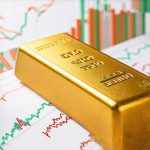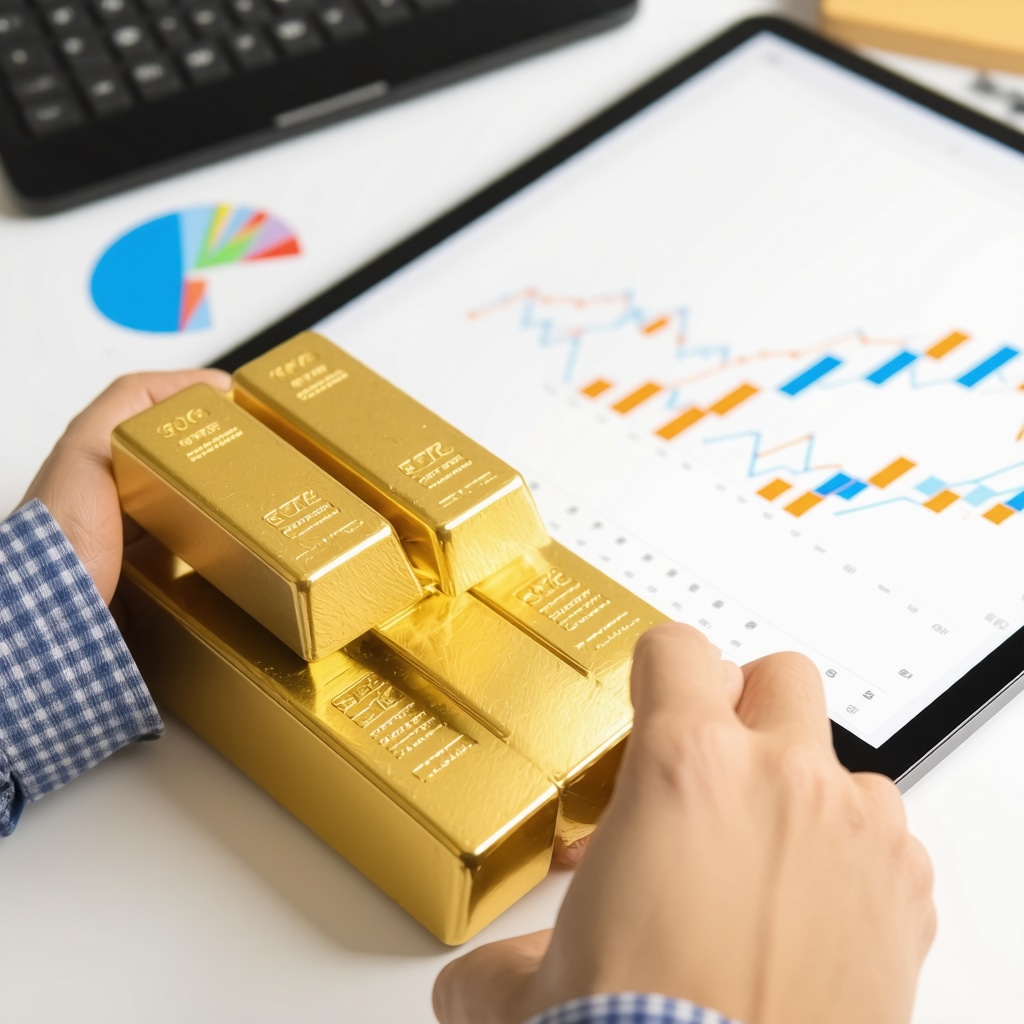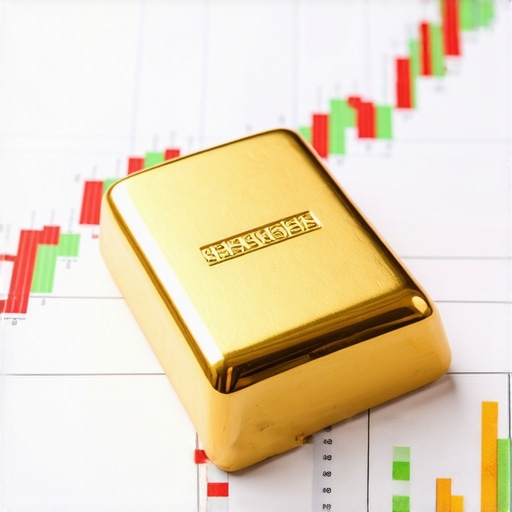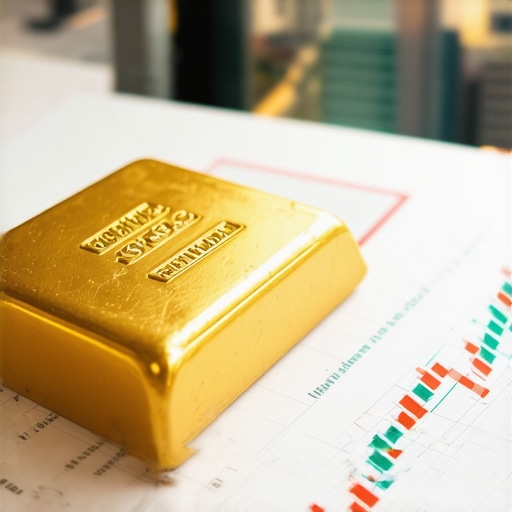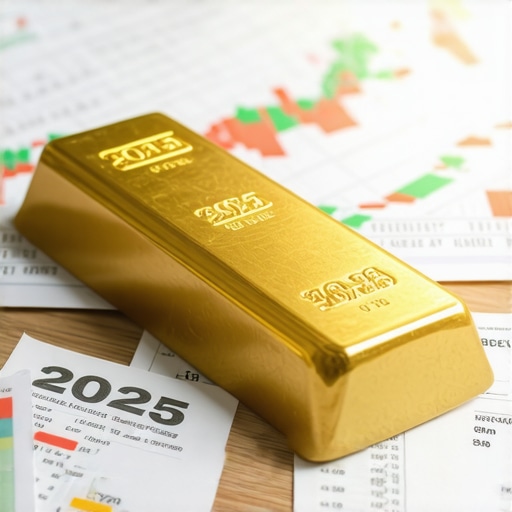Discovering Gold ETFs: My First Steps Toward Steady Growth
When I first considered diversifying my investment portfolio, gold ETFs caught my attention as a promising option. I remember hesitating between physical gold and ETFs, wondering which would better support steady growth over time. My curiosity led me to explore how to select the best gold ETFs, aiming for a balance of safety and growth potential. This experience taught me that choosing the right fund requires more than just picking any ticker symbol—it demands understanding the fund’s structure, fees, and underlying assets.
Lessons Learned: What Makes a Gold ETF Truly Reliable?
One key insight I gained was the importance of the ETF’s expense ratio. Lower fees mean more of your investment returns stay with you, which is crucial for steady growth. I also looked closely at the fund’s liquidity and the reputation of the issuer, as these factors influence how easily you can buy or sell shares without affecting the price. For example, funds like SPDR Gold Shares (GLD) and iShares Gold Trust (IAU) have consistently high liquidity and are backed by tangible gold holdings, which I found reassuring.
How Do I Balance Risk and Growth When Choosing a Gold ETF?
This question often came up in my research and conversations with fellow investors. I realized that while gold ETFs provide exposure to gold prices without the hassle of physical storage, they still carry market risks. Some ETFs track gold futures or derivatives, which can be more volatile. I preferred ETFs that hold physical gold bullion, as they tend to mirror gold’s price more closely, offering a steadier growth trajectory. This approach helped me manage risk while positioning my portfolio for long-term stability.
Digging Deeper: Where to Find Trusted Information and Insights
In my journey, I found it invaluable to rely on authoritative sources like the World Gold Council for market trends and educational materials. According to their insights, gold ETFs have become a preferred vehicle for investors seeking liquidity and cost efficiency alongside physical gold exposure. I also discovered that staying informed about global gold demand trends can influence when and which ETFs might perform better, as discussed in detailed market analyses like those at Buying Gold Now.
Sharing My Experience: Why I Encourage You to Explore Gold ETFs
Selecting the best gold ETFs for steady growth isn’t a one-size-fits-all process—it’s personal and requires thoughtful consideration. If you’ve dipped your toes into gold investing or are contemplating it, I’d love to hear about your experiences or questions. Feel free to share your journey or ask for tips in the comments below. Together, we can navigate the rewarding world of gold ETFs with confidence and clarity.
Understanding the Nuances of Gold ETF Structures
After grasping the basics of gold ETFs, I delved into the different structures these funds can have. Some gold ETFs are physically backed, holding actual gold bullion in vaults, while others use derivatives or futures contracts to track gold prices. This distinction significantly impacts risk and return profiles. Physically backed ETFs, like SPDR Gold Shares (GLD), generally offer more stability since they mirror the underlying asset directly. In contrast, ETFs relying on futures may experience tracking errors and higher volatility due to contract rollovers and market fluctuations.
Evaluating Liquidity and Its Impact on Trading Efficiency
Liquidity is another critical factor that seasoned investors must consider. High liquidity means tighter bid-ask spreads, reducing transaction costs and allowing swift entry and exit from positions without large price impacts. I prioritized ETFs with daily trading volumes in the millions, ensuring I could adjust my holdings efficiently. This approach also shields investors from sudden market shocks, as liquid ETFs tend to react more predictably under stress.
How Can Advanced Analytical Tools Enhance Gold ETF Investment Decisions?
Leveraging sophisticated tools like moving averages, Relative Strength Index (RSI), and volume analysis can provide deeper insights into timing and market sentiment for gold ETFs. For instance, monitoring the 50-day and 200-day moving averages helps identify trend directions, while RSI can indicate overbought or oversold conditions. These technical indicators, combined with fundamental analysis of macroeconomic factors such as inflation and currency strength, empower investors to make more informed decisions. I found platforms offering integrated analytics invaluable to refine my strategy and anticipate market shifts.
Incorporating Global Economic Indicators into Your Strategy
Gold prices are heavily influenced by global economic factors including central bank policies, geopolitical tensions, and currency valuations. For example, increased central bank gold purchases can signal rising demand and potential price appreciation. Monitoring reports from authoritative institutions like the World Gold Council and the International Monetary Fund provides timely data to anticipate such trends. This macro perspective helped me contextualize ETF performance beyond daily price movements, aligning my investments with broader market dynamics.
For those interested in a comprehensive overview of gold market trends and their implications for investment choices, the detailed analysis available at Buying Gold Now offers expert insight grounded in current data and forecasts.
Strategies to Mitigate Risks in Gold ETF Investments
Even gold, traditionally a safe haven, is not immune to risks. Currency fluctuations, regulatory changes, and market sentiment can cause price volatility. To mitigate these risks, I diversified within gold ETFs by selecting funds with different underlying assets and geographic exposure. Additionally, setting stop-loss orders and regularly reviewing portfolio allocations helped control downside risks. Practicing disciplined investment and staying updated with market news are vital strategies I recommend for anyone serious about long-term growth.
Unpacking the Tax Implications of Gold ETF Investments
One aspect I initially underestimated was the tax treatment of gold ETFs, which can differ significantly from other investment vehicles. In many jurisdictions, gains from gold ETFs are taxed as collectibles rather than standard capital assets, potentially subjecting investors to higher tax rates. This nuance pushed me to research and understand how my country treats such investments and to consider tax-efficient strategies within my portfolio. For example, pairing gold ETFs with retirement accounts or exploring gold mutual funds with different tax profiles helped me optimize after-tax returns. For those diving deeper, resources like top gold mutual funds provide valuable insights into tax-friendly alternatives.
Mastering the Emotional Side of Gold Investing
Investing in gold ETFs isn’t just about numbers and strategies—it’s also an emotional journey. I’ve found that the allure of gold as a “safe haven” can sometimes lead to impulsive decisions during volatile markets. Early on, I noticed my own tendencies to react strongly to sudden price dips or spikes, which could undermine long-term goals. Cultivating patience and discipline became as crucial as understanding market fundamentals. I now recommend keeping a clear investment plan and resisting the urge to “chase” short-term gains. This emotional awareness complements analytical tools and can protect investors from common psychological pitfalls.
How Can I Integrate Gold ETFs with Other Asset Classes for Optimal Portfolio Balance?
This question often emerges from conversations with fellow investors seeking to harmonize their portfolios. My approach evolved into viewing gold ETFs not as standalone bets but as part of a broader diversification strategy. For instance, blending gold ETFs with equities, bonds, and real estate investments can smooth volatility and enhance overall returns. I personally allocated a modest percentage to gold ETFs, calibrated to my risk tolerance and investment horizon. Exploring strategies for building a gold portfolio helped me understand the interplay between asset classes and how gold can serve as a hedge against inflation and market uncertainty.
Reflecting on Market Timing Versus Long-Term Commitment
In my journey, striking the balance between timing the market and committing for the long haul has been one of the most challenging aspects. While technical indicators and economic signals provide helpful guidance, I learned that trying to perfectly time gold ETF trades often leads to missed opportunities or unnecessary stress. Instead, I embraced a strategy of steady accumulation, using dollar-cost averaging to mitigate price fluctuations. This mindset shift helped me stay focused on my investment goals rather than short-term market noise.
For those curious about the latest market dynamics influencing gold prices and effective timing strategies, the analysis on gold market trends is a fantastic resource that deepened my understanding.
Seeking Community and Continuous Learning
One of the most enriching parts of my gold ETF investment experience has been engaging with a community of like-minded investors. Sharing perspectives, asking questions, and learning from others’ successes and mistakes have been invaluable. If you’re exploring gold ETFs or looking to refine your approach, I encourage you to join discussions, forums, or comment sections where these conversations flourish. Your unique insights and questions can spark valuable dialogue, and together we can navigate the intricate, rewarding landscape of gold investing.
Unveiling the Subtleties of Gold ETF Expense Structures and Their Hidden Costs
In my ongoing exploration of gold ETFs, I uncovered that the expense ratio, while often highlighted, is just the surface of potential costs. Some funds embed additional fees related to storage, insurance, or management nuances that subtly erode returns over time. I learned to dissect the prospectus meticulously, identifying these hidden expenses, which helped me avoid funds that appeared cheap upfront but proved costly in the long haul. This fine-grained scrutiny reinforced how critical transparency and fund governance are when targeting steady growth. For those interested in a deeper dive into how different gold investment vehicles compare on cost and safety, I found the analysis comparing gold ETFs and mutual funds particularly illuminating.
Harnessing Behavioral Finance Insights to Strengthen Investment Discipline
One of the more profound lessons came from acknowledging how behavioral biases influence investment decisions with gold ETFs. The tendency to anchor on recent price highs or succumb to herd mentality during market rallies can derail even the most solid strategies. I started integrating behavioral finance principles—like setting predefined rebalancing rules and avoiding impulsive trades triggered by fear or euphoria. This psychological framework complemented my technical and fundamental analyses, enabling me to maintain consistency despite volatile market whispers. Embracing such mental models transformed my approach from reactive to strategic.
What Are the Best Practices for Integrating Gold ETFs with Alternative Investments to Optimize Portfolio Resilience?
By expanding beyond traditional asset classes, I discovered that pairing gold ETFs with alternatives such as real estate investment trusts (REITs), commodities, or even selective cryptocurrencies could further diversify risk profiles. However, the key lies in understanding correlation dynamics over market cycles. I routinely monitor how gold’s inverse relationship with equities shifts during stress periods and adjust allocations accordingly. This dynamic blending ensures my portfolio remains robust against inflation, currency fluctuations, and geopolitical shocks. For a comprehensive framework on constructing such diversified portfolios, the guide on building a gold investment portfolio is an invaluable resource.
Decoding Central Bank Gold Acquisition Patterns and Their Market Reverberations
Tracking central bank gold purchases introduced a macroeconomic dimension that profoundly impacted my timing and selection within gold ETFs. These institutions often act as bellwethers, signaling shifts in global monetary policy and reserve diversification strategies. For instance, surges in central bank gold buying typically presage price upticks, reflecting increased trust in gold as a reserve asset amid currency uncertainty. Integrating reports from the World Gold Council and related analyses sharpened my ability to anticipate such trends. This macro lens complements technical metrics, creating a more holistic investment approach.
Elevating Security Measures for Your Gold ETF Holdings in an Increasingly Digital Landscape
With the rise of digital brokerage platforms, safeguarding gold ETF investments transcends physical storage concerns and ventures into cybersecurity. I adopted multi-factor authentication, secure portfolio monitoring tools, and diversified custodians to protect against hacking or platform failures. Additionally, I remain vigilant about regulatory changes impacting gold ETF structures or trading practices, ensuring my investments comply with evolving standards. This proactive stance on digital security is increasingly vital as the investment ecosystem grows more interconnected and complex.
If you resonate with the complexities of gold ETF investing and wish to share your experiences or seek tailored advice, I warmly invite you to engage in the comments. Together, we can deepen our collective understanding and navigate the sophisticated terrain of gold investment with confidence and nuance.
Things I Wish I Knew Earlier (or You Might Find Surprising)
The Expense Ratio Isn’t the Whole Story
When I first looked at gold ETFs, I thought the expense ratio was the main cost to worry about. But over time, I realized there are hidden fees like storage, insurance, and management expenses that can quietly chip away at returns. It taught me to dig deeper into fund prospectuses and not just pick the cheapest option at face value.
Physical Backing Means Peace of Mind
I used to assume all gold ETFs were basically the same. The distinction between physically backed funds and those using futures contracts was a game changer for me. Physically backed ETFs tend to track gold prices more closely and feel like a more secure way to hold gold exposure without the hassle of physical storage.
Liquidity Shapes Your Trading Experience
High liquidity is more than just a buzzword. I learned that ETFs with millions in daily trading volume let me buy or sell shares smoothly without big price swings. This made a huge difference when I needed to adjust my portfolio quickly or avoid paying inflated spreads.
Gold ETFs Aren’t Risk-Free—Know the Nuances
Gold is often called a safe haven, but my experience taught me that gold ETFs carry their own risks. Market volatility, currency fluctuations, and the fund’s structure all affect returns. I found that blending different types of gold investments helped me balance risk better.
Emotions Can Make or Break Your Strategy
I wasn’t prepared for how emotional gold investing could be. The temptation to react to every price spike or dip almost led me astray. Learning to stay patient, stick to my plan, and avoid impulsive moves became as important as any technical analysis.
Integrating Gold ETFs with Other Assets Is Key
Rather than treating gold ETFs as standalone bets, I discovered the power of including them as part of a diversified portfolio. Combining gold ETFs with stocks, bonds, and alternatives helped me reduce overall volatility and protect wealth through uncertain times.
Resources I’ve Come to Trust Over Time
World Gold Council – Their reports and educational content gave me a solid macroeconomic perspective on gold markets and trends. It’s like having a trusted compass for understanding demand and price movements.
Buying Gold Now – This site became my go-to for practical guides and in-depth analyses, such as the ultimate guide to gold ETFs. The clear explanations helped me grasp complex topics with confidence.
Investopedia – Their accessible breakdowns of financial concepts, including ETF structures and tax implications, helped me avoid rookie mistakes and make informed decisions.
Morningstar – For detailed fund analysis and performance metrics, Morningstar’s insights helped me compare gold ETFs and select ones with strong governance and consistent returns.
Financial Forums and Communities – Engaging with fellow investors in forums and comment sections provided real-world perspectives and diverse strategies that enriched my understanding beyond textbooks.
Parting Thoughts from My Perspective
Reflecting on my journey, what stands out most about investing in gold ETFs is the blend of thoughtful research, emotional discipline, and continuous learning. Choosing the right gold ETFs for steady growth isn’t just about chasing the highest returns—it’s about understanding the subtle differences in fund structures, costs, and market dynamics. By embracing a long-term mindset and integrating gold ETFs thoughtfully within a diversified portfolio, I found a sense of financial balance and resilience that feels truly rewarding.
If any part of my experience resonates with you, or if you have your own stories and questions about gold ETFs, I’d love to hear from you. Sharing our insights makes this complex journey less daunting and infinitely more enriching. Feel free to drop your thoughts in the comments below or pass this along to someone who might find it helpful.

